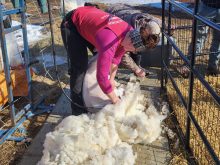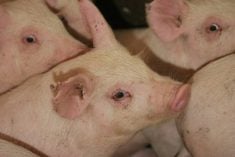DRAYTON VALLEY, Alta. – Canadian elk herds are tuberculosis free but vigilance among game farmers to keep their animals healthy is as strong as ever.
Ken Orchard, an Agriculture Canada veterinarian, regularly tests Alberta game farm animals so herds can maintain clean records for tuberculosis and brucellosis.
“Alberta herds are virtually all clean,” said Orchard in an interview at an elk show in Drayton Valley.
A “negative status herd” is one which consists of testable species like bison, elk and deer. The entire herd must have had negative blood tests for the two diseases. Calves are not tested.
Read Also

Charges laid after cattle theft
Saskatchewan RCMP lay two charges against a man after six cattle went missing.
To maintain the disease-free status, herd increases may only come from natural growth or by adding animals from other negative-status herds.
Tests every three years
New farms don’t have negative status until all animals have been tested for tuberculosis and brucellosis and show no signs of disease.
The test must be performed at least six months after the arrival of the first animal and a minimum of 90 days after the last addition to the herd. Elk are tested every three years, bison every five.
Tuberculosis was discovered on several western Canadian elk farms in 1990-91.
This resulted in a widespread slaughter of herds containing animals that tested positive for the contagious disease.
About 2,200 elk, 180 cattle and 80 bison were destroyed and owners received about $10 million in compensation from Agriculture Canada for losses.
“The very initial reaction was that we were overreacting. We were getting rid of animals that were maybe salvageable for their special genetics that they wanted to preserve,” said Orchard.
Since then, many agree the widespread slaughter ordered by Agriculture Canada was the right decision.
“We’ve effectively eliminated the disease from cattle using the very same techniques over a longer period of time,” said Orchard.
All transport of animals requires permits in order to trace captive ungulates like deer or elk.
Alberta animals can be exported anywhere but none can enter the province, primarily because wildlife people are concerned about the importing of a brain parasite carried by deer.
They worry the meningeal worm could infect wild populations, said Orchard.
The ban prevents elk and deer, as well as llamas and alpacas, from entering Canada.

















